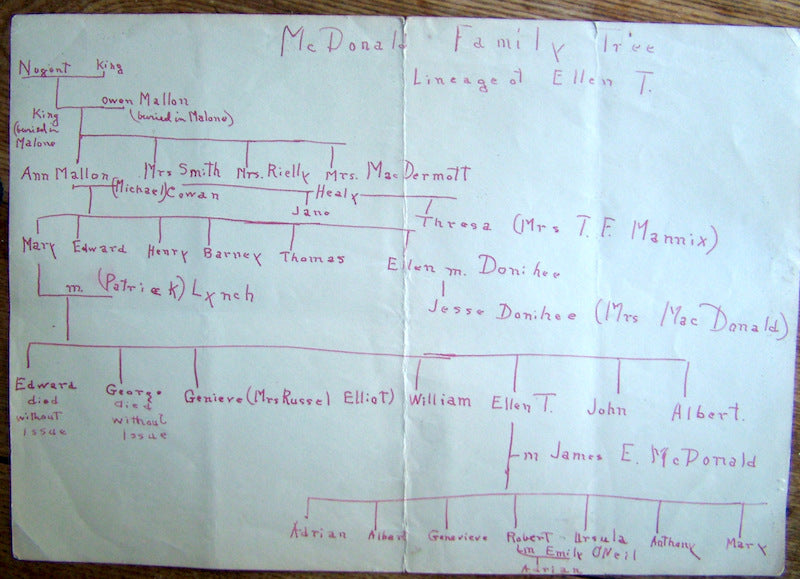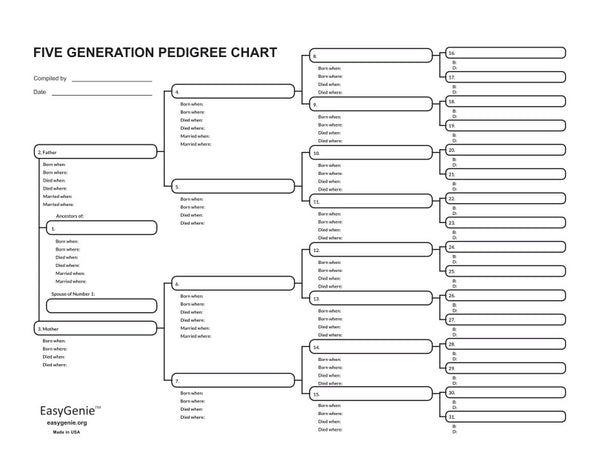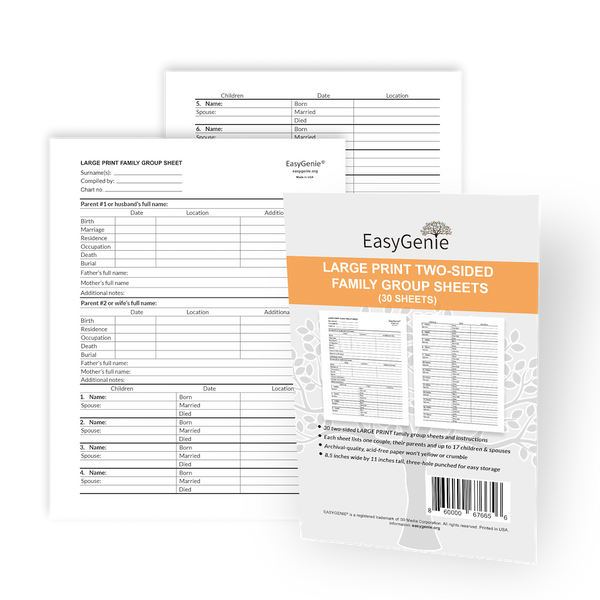
Genealogy at the end of life
Ian LamontFrom time to time, we get emails from customers who purchased our genealogy charts with a very specific reason in mind.
They want to ensure their core research is preserved and passed down to future generations. Often they have been researching their family history for decades, but fear that the computer files will be forgotten or their Ancestry accounts will lapse or the data will otherwise be lost.
Sometimes, the people who reach out are very ill. Putting the family history on paper is one of the most important things they can do before they pass on.
These customers make us think of our own families.
In the early 1930s, toward the end of her life, a maternal great-grandmother put to paper the family history of her line. It's a handwritten tree, going back three or four generations to the early 1800s. It's an important source of information, as some of the names aren't in any official sources - records from the "old country" from that branch of the family and that period of time are sparse.
The home-made tree is also a touchstone to the past, names that she wanted to share with the generations that followed so they would not be forgotten.
She's not the only one to do this. 50 years ago, Ian's father sketched out a similar tree on the back of some hospital stationery as his mother lay dying of cancer. She wanted to make sure that her knowledge of the family history was passed down.
The fact that it was on paper made all the difference to her, and will be treasured by us -- and our descendants -- for many years to come.








